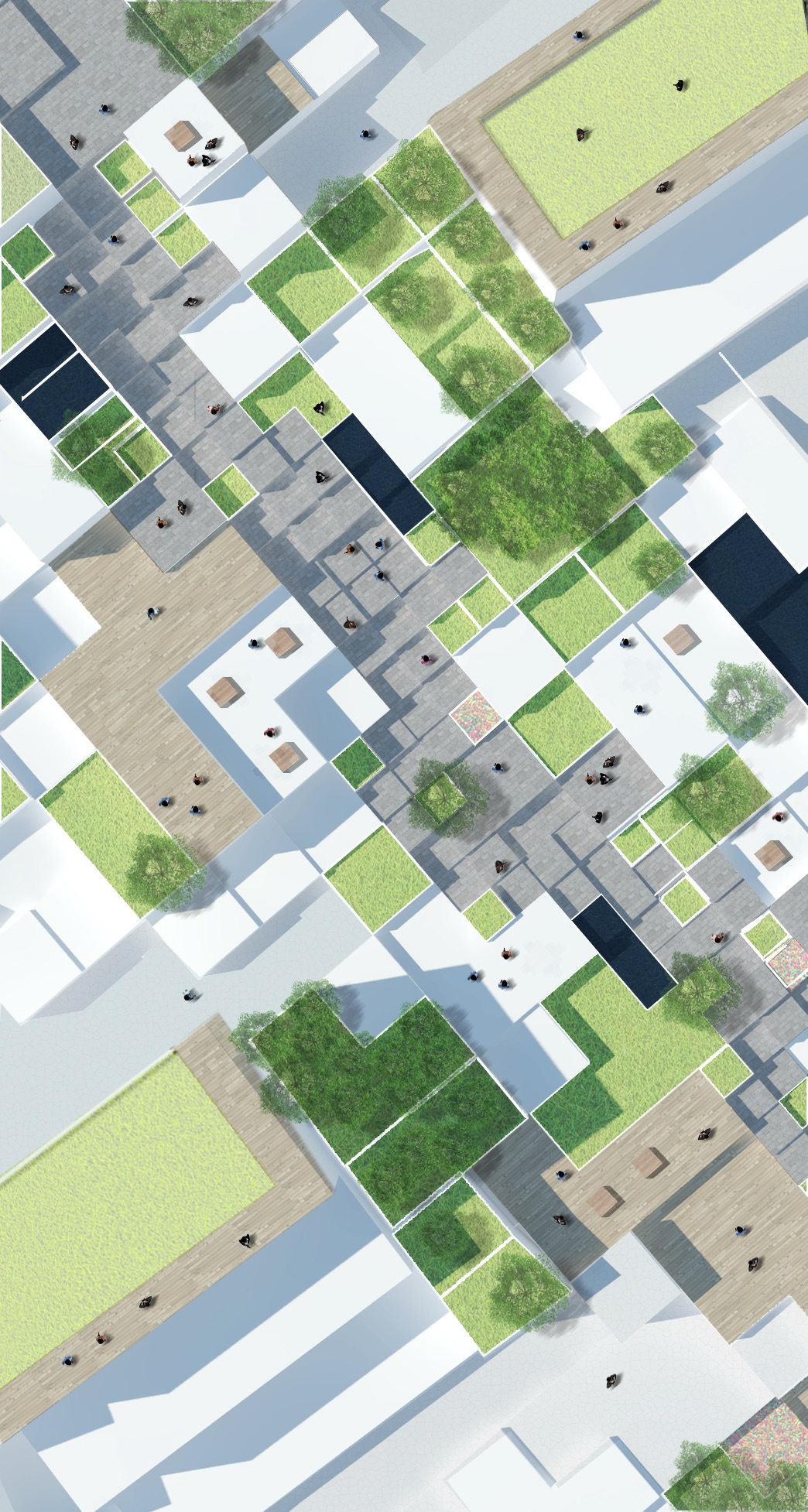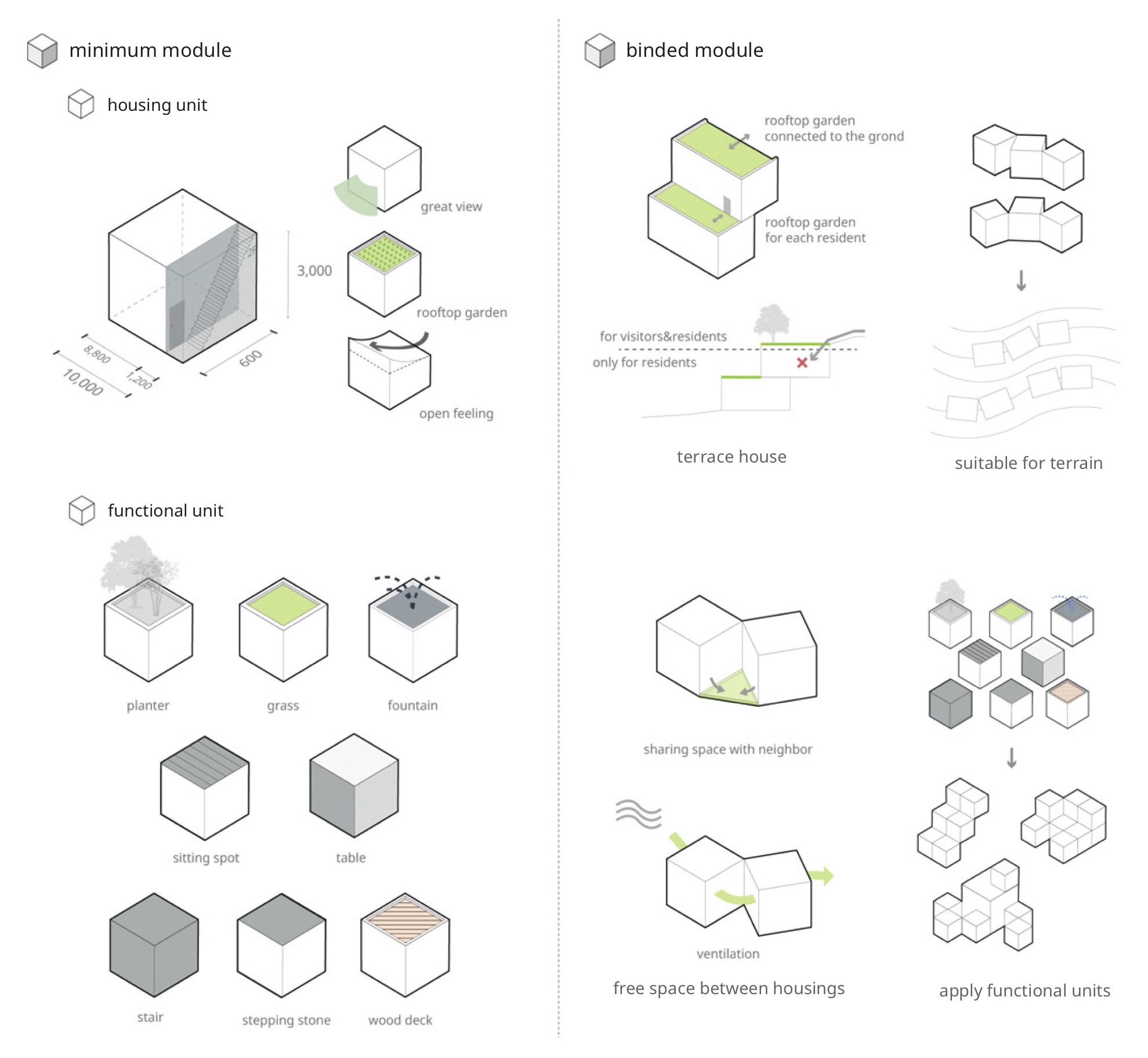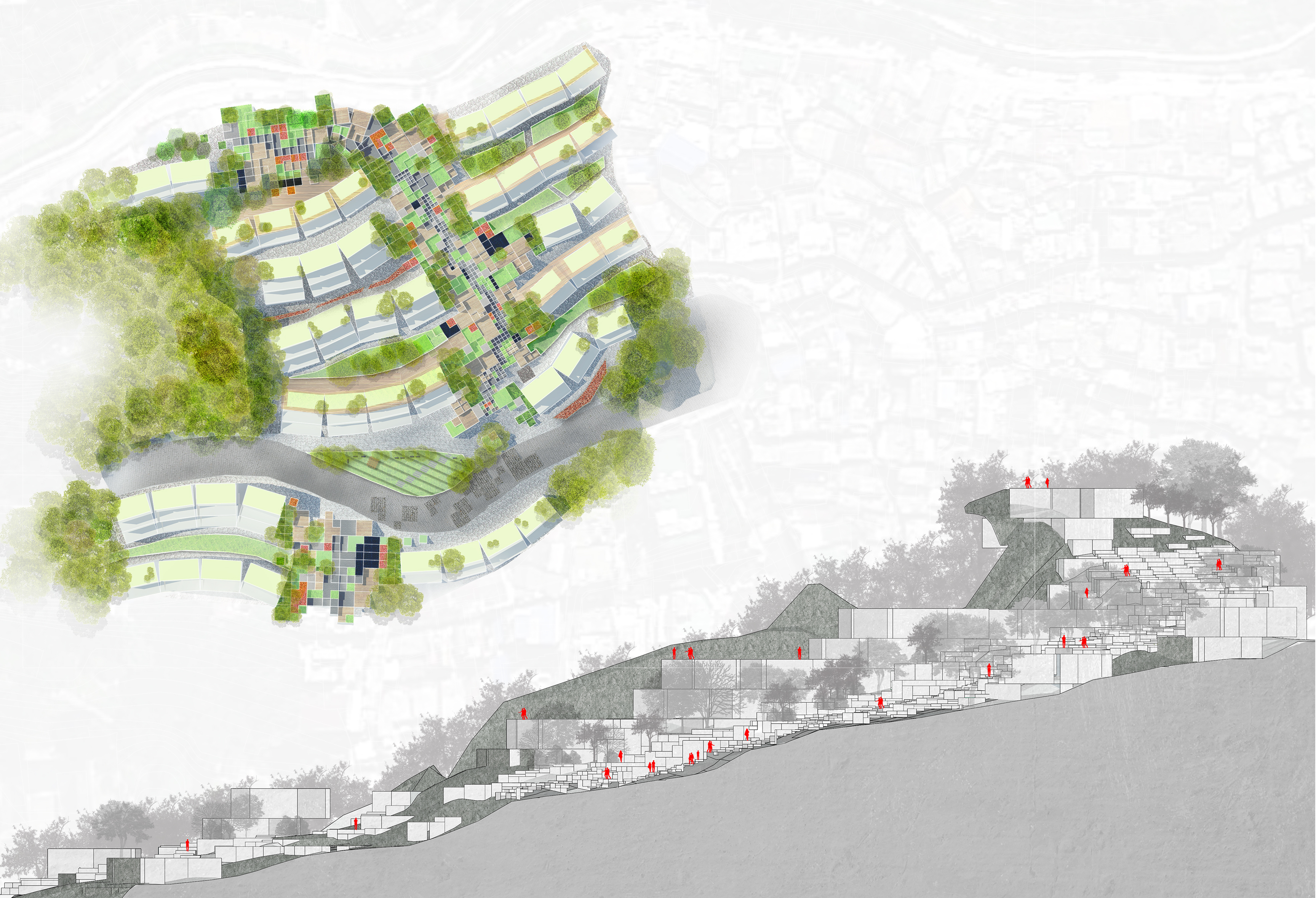#SpatialDesign #LandscapeArchitecture
Individual Project | 2016
Duration: 1 month
Tools: Adobe Illustrator, Adobe Photoshop, AutoCAD, SketchUp
![]()
Ihwa-dong is a hilly residential area of Seoul. As a part of a 2006 cultural rehabilitation project, the town brought in artists to cover the stairs and walls with murals, thereby rebranded the neighborhood as a “mural village.” This project introduced an influx of visitors to the area, while local residents were severely inconvenienced due to invasions of privacy, increased garbage and noise. The local residents’ convenience was never considered as a primary concern and they eventually responded through vandalism of the murals.
This brings up the question of land ownership and whether or not the needs of residents and visitors can coexist. Addressing this issue begins with the dualization of subject and object. Visitors and residents are divided without being aware of the possibility for interaction between one another.
![]()
A simple programmatic approach for solving a problem, without considering a physical environment, would create confusion. The composition of Cubic garden guarantees the private space of residents by separating the pathways of visitors from the living space of residents. In residential buildings, the collision of visitors and residents is prevented by separating rooftop space and residential space. This physical division paradoxically breaks the boundaries between the two cohorts. Additionally, by providing a common community space between subjects and objects, the boundary between how visitors and residents perceive the community’s slopes is weakened.
In this hilly community space, the concept of space is blurred as visitors treat the slopes as a viewpoint, while residents continue to view it simply as a slope. The collapse of a dichotomy from the decaying boundary creates a rhizome form through the interactions of both residents and visitors and allows the possibility of creating events in the space. The concepts of subject/object and resident/visitor become increasingly blurred.
![]()
![]()
![]()
︎︎︎ Go Back
Cubic Garden
; who is the owner of this land?Duration: 1 month
Tools: Adobe Illustrator, Adobe Photoshop, AutoCAD, SketchUp
> Who is the owner of this land?

| Problem |
The local residents’ convenience was never considered as a primary concern while the area became popular among tourists and gentrified.
| Goal |
Utilizing the slope for both tourists and the local residents while dividing their circulations.
Background
Ihwa-dong is a hilly residential area of Seoul. As a part of a 2006 cultural rehabilitation project, the town brought in artists to cover the stairs and walls with murals, thereby rebranded the neighborhood as a “mural village.” This project introduced an influx of visitors to the area, while local residents were severely inconvenienced due to invasions of privacy, increased garbage and noise. The local residents’ convenience was never considered as a primary concern and they eventually responded through vandalism of the murals.
This brings up the question of land ownership and whether or not the needs of residents and visitors can coexist. Addressing this issue begins with the dualization of subject and object. Visitors and residents are divided without being aware of the possibility for interaction between one another.

Inspiration & motivation
A simple programmatic approach for solving a problem, without considering a physical environment, would create confusion. The composition of Cubic garden guarantees the private space of residents by separating the pathways of visitors from the living space of residents. In residential buildings, the collision of visitors and residents is prevented by separating rooftop space and residential space. This physical division paradoxically breaks the boundaries between the two cohorts. Additionally, by providing a common community space between subjects and objects, the boundary between how visitors and residents perceive the community’s slopes is weakened.
In this hilly community space, the concept of space is blurred as visitors treat the slopes as a viewpoint, while residents continue to view it simply as a slope. The collapse of a dichotomy from the decaying boundary creates a rhizome form through the interactions of both residents and visitors and allows the possibility of creating events in the space. The concepts of subject/object and resident/visitor become increasingly blurred.
Strategy: module

Strategy: circulation

Plan

︎︎︎ Go Back